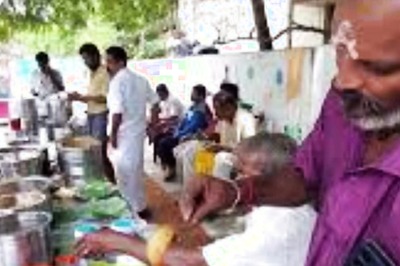
166
views
views
As part of News18 Network’s ‘Project One Tree’, a movement aiming to mobilize every Indian to plant a tree as a measure against climate change, we list out the dos and don'ts that will help you start your trees off right
As the season takes a turn and the weather finally starts to cool off with the arrival of monsoon, it’s the best time to plant some trees. So you’ve got your sapling, what is the next step? Plants require a push in the right direction for their proper growth. All tree planting, including replenishing, must be done carefully and in a way that maximises the growth, survival, and establishment of the trees.
As part of News18 Network’s ‘Project One Tree’, a movement aiming to mobilize every Indian to plant a tree as a measure against climate change, we list out the dos and don’ts that will help you start your trees off right, give them the best chance of surviving, and keep you safe in the process.
Dos
- Select trees with uses in mind: You might be seeking fruit, rich fall colours, spring flowers, shade, a sound barrier, or a host of other advantages. According to your needs, make appropriate tree selections.
- Use organic fertilisers: Make use of organic fertilisers devoid of artificial chemicals. Compared to those that include synthetic ingredients, these work far better. They create a far superior soil profile in addition to holding nutrients more effectively.
- Check the roots: Before purchasing a plant, check the root ball if at all possible. Plants in plastic pots make it simple to check the roots before planting, something that is not possible with balled and burlapped plants. White or extremely light-coloured roots are considered healthy; dark roots could be dangerous.
- Use appropriate gear: Wear gloves and appropriate footwear, as well as other protective apparel. Use planting bags and tools that are acceptable, hygienic, and functional.
- Mulching: Mulch is essentially a protective layer spread on top of the soil to provide protection. It feeds the soil and the trees by imitating the natural litter found on forest floors. Just spread mulch, 2-4 inches thick, out to the tree’s dripline. After that, just unwind as your trees enjoy the abundance of nutrients.
Don’ts
- Plant too high or too low: Trees depend on soil for absorption of water, minerals, nutrients and support so it means that planting them too high or with exposed roots is not a good idea. But planting too low is detrimental. Like humans, roots require oxygen to breathe. Planting low increases the likelihood of decay and disease in addition to suffocating roots.
- Trample the soil after planting: A lot of people can’t resist treading on the soil after planting to smooth it out. Avoid doing this! Make sure the tree receives enough water once the soil has settled and covered all of the roots. The dirt will settle and become more level thanks to the water. When you manually settle the soil with your feet, it becomes quite compacted and descends below grade.
- Plant pot-bound root: A tree’s own roots have the power to suffocate it! How in the world is this possible? Tree roots that are left in the pot too long begin to spiral because they have nowhere else to go. If the tree is planted exactly as it is, it will eventually choke due to the roots’ constant circling around the trunk and each other. Prune or separate circling roots to stop a tree from taking its own life.
- Place trees too close to one another: Give young trees five or ten feet of room to grow apart to prevent crowding. When evergreens are planted too closely together, they become vulnerable to disease and pests. If the trees don’t get enough sunlight, some of them may even die.
- Avoid over-watering: Your tree will need a large amount of water when it is first planted. But after it’s planted, avoid giving it too much water. The roots may become submerged due to overwatering. Large, infrequent amounts of water will encourage deep-root development and drought resistance. The tree might need a little more water during dry periods.



















Comments
0 comment